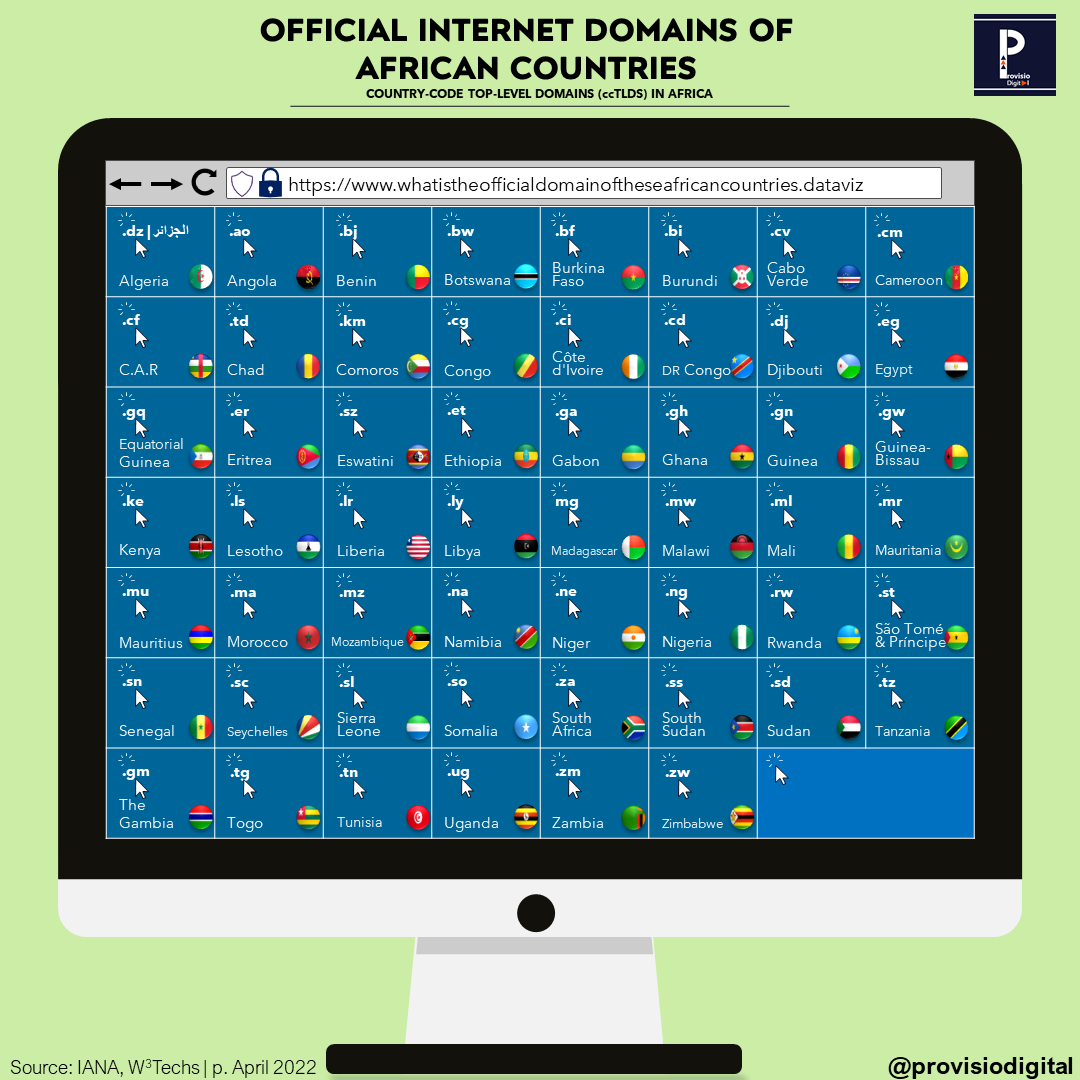Why We Looked Into This? »👀
|

COUNTRY-CODE TOP-LEVEL DOMAINS (ccTLDS) IN AFRICA
- Country-code top-level domains (ccTLDs) were introduced in the 1980s with the advent of the internet. With .gov (United States) registered in 1985, there were some initial set of TLDs for countries such as .us, .uk and .il. As many countries began to make use of these TLDs, the domain names, which are usually two-letter initials of (the words that form) the country’s name. The official domain names are used to identify websites that are from a country – most times, government sources or national authorities.
- South Africa’s the first African country to register its domain in 1990 along with Egypt (also 1990). Most African countries registered domain names later in the 1990s – 1995 (10 countries), 1996 (10 countries) and 1997 (12 countries). Others who registered after the 20th century (in 2002) were Kenya, Malawi and Sudan with South Sudan (a new country formed in 2011 from Sudan) being the latest country with recent registered in 2011. Per regional basis, Southern African countries were the earliest to register ccTLDs – South Africa & Namibia (1990); Botswana, Eswatini and Lesotho (1993).
- Chad uses its French spelling (Tchad) as the basis for its domain; Eswatini uses .sz which was from the former name of the country – Swaziland; Morocco’s .ma is derived from Maroc and South Africa’s .za is derived from the Dutch Language – Zuid Afrika (meaning South Africa).
- The most active ccTLDs in Africa are South Africa’s .za (.40% of all websites) followed by Morocco’s .ma, Nigeria’s .ng and Kenya’s .ke (all .10% of websites)
- In 2017, the African Union launched the .africa domain to tell the African story.

This work is licensed under a Creative Commons Attribution-NonCommercial 4.0 International License.


